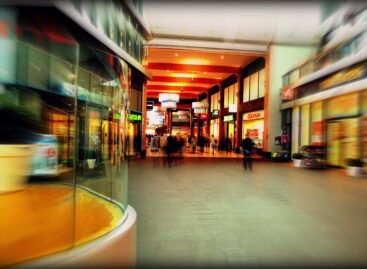Glasses to be clinked this year as well
The market of champagne is a stable and predictable one. Demand for cheap imported products is up as a result of the recession. The minimal decline seen in recent years has stopped. – Annual growth of 1-2 percent is a cause for joy in this period of recession – say György Kovács, managing director of Törley Pezsgőpincészet. A wide range of marketing tools have been used to achieve this modest growth. However, sales of more expensive brands have expanded, with Hungária boosting its market share by 20 percent this year. The market share of private labels show decline, but this might be misleading, as retail chains have imported substantial quantities of cheap brands which function as if they were private labels. These so called channel brands have a limited effect on the structure of sales, owing to their modest price. Another new development is that even hard discounts have begun stocking brands. – Polarisation is going to increase, with growing demand for cheap and also for expensive products at the expense of the medium price segment – says Róbert Fórián Szabó, sales and marketing manager of Royalsekt Zrt. Champagne remains a seasonal product, with 50-70 percent of annual sales generated in December. However, Törley has been trying to open up new opportunities for consumption. – We believe there is good market potential in the summer period – says György Kovács. Törley held a successful summer promotion this year, offering champagne with fruit juices and strawberry. Canned champagne marketed by Cezar Winery is another attempt to make champagne consumption less seasonal. According to József Tuczai, director, this product is not easy to get listed by retail chains, but has a promising future. – Demand for premium brands is less seasonal than for cheaper products – says Zsolt Vuleta, managing director of Bacardi-Martini Hungary Kft. Sales of imported premium brands are growing dynamically. Sweet champagne continues to account for two-thirds of total sales. Regarding flavour preference, Hungarians are Mediterranean type consumers ranking 4-6th globally in terms of per capita consumption. Champagne is only consumed on special occasions at present, unlike wine which has become trendy. Education is needed to change this situation. Apart from Törley Pezsgőpincészet, the largest supplier in the market, few companies have money to spend on promotional activities. Manufacturers have been developing product lines in recent years to increase segmentation in the market. Being distinct and easily distinguishable from competitors is becoming increasingly important. Product development and image building by Törley is based on extensive research to define the target groups of different brands. While BB is popular among young age groups for partying, Törley is intended for special occasions. “Blue” Hungaria is extravagant, with a strong presence in gastronomy, whereas Kölyök is for kids. Cezar Winery also has a full range of products, from sweet to semidry, dry and brut, including older brands like Fünfkirchen, or Őrs vezér. More recent products show a more uniform image. Recession is expected to have a less serious effect on end of year sales, than in the case of other products, but sensitivity to price is also expected to rise. This is why POS and ATK activities are both to be stepped up by leading brands.
Related news
Related news
Crowds return to stores: margin cap and year-end preparations drive retail traffic
🎧 Hallgasd a cikket: Lejátszás Szünet Folytatás Leállítás Nyelv: Auto…
Read more >The second big rush in department stores comes between the two holidays
🎧 Hallgasd a cikket: Lejátszás Szünet Folytatás Leállítás Nyelv: Auto…
Read more >Pensioner food vouchers can be redeemed until December 31st
🎧 Hallgasd a cikket: Lejátszás Szünet Folytatás Leállítás Nyelv: Auto…
Read more >



